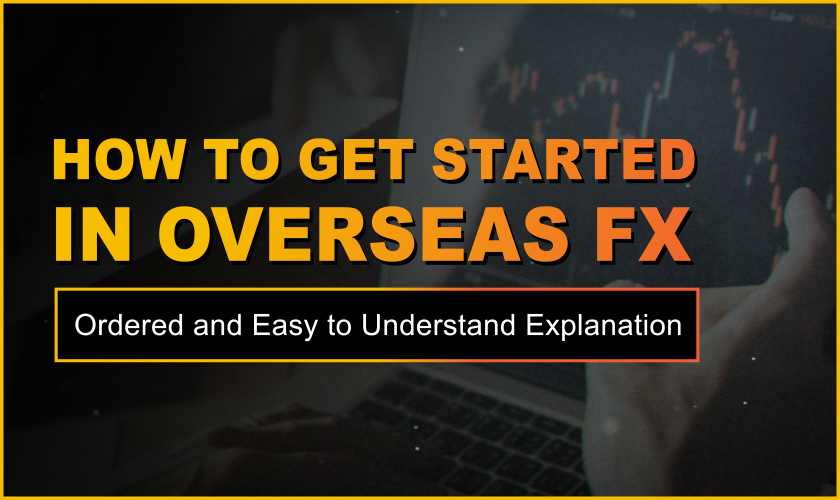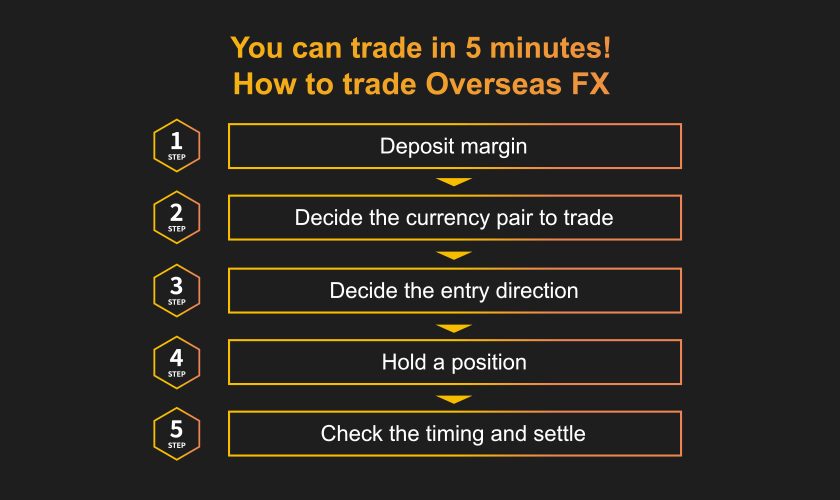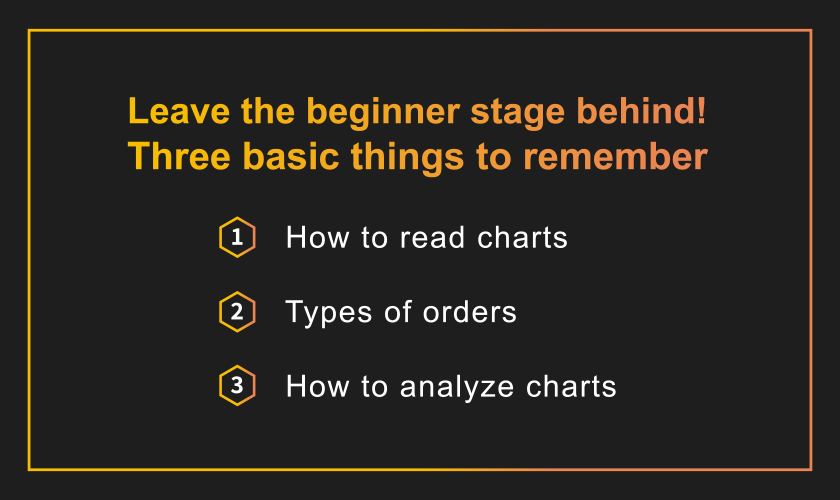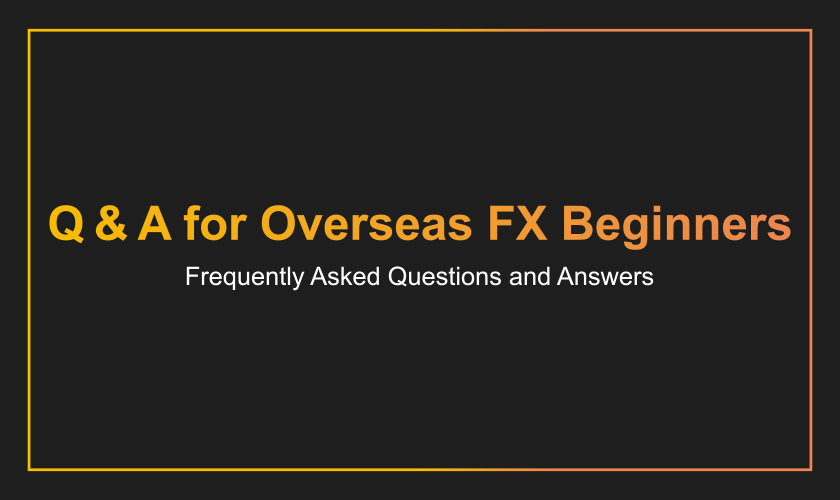
Due to the influence of factors such as the boom in asset management and side jobs, more and more people are starting to trade FX recently. Those reading this article are likely also thinking about starting FX. This time, we will explain in an easy-to-understand manner how to do FX and how to get started for such people. We have also summarized things to keep in mind in order to win and ways to avoid big mistakes, so please use it as a reference.
Anyone can do it! How to start overseas FX

Anyone can easily start overseas FX. However, it is dangerous to start overseas FX without knowing anything. In order to prevent major failure, here are some things to remember before starting overseas FX.
First, learn about FX
FX is an abbreviation for “Foreign eXchange” and is called foreign exchange margin trading in Japanese. Simply put, it is an investment that makes a profit by buying and selling currency. For example, let’s say you bought a currency for 100 yen. An hour later, the price of that currency became 101 yen. If you sell the currency you purchased at this time, the difference of 1 yen will be your profit.
Learn basic terms
There are several basic terms in overseas FX, so let’s learn them. The basic terms you should remember are as follows.
・Leverage
・Loss cut
・Spread
・Swap point
Leverage is a mechanism that allows you to trade for more than the amount you have deposited in an overseas FX exchange. For example, if you deposit 100,000 yen and leverage 100 times, you can trade as if you had 10 million yen.
Loss cut is a protective measure to protect the trader’s funds. When a certain percentage, set by the overseas FX broker, is reached with losses, it automatically stops the trade.
Spread is, in simple terms, the transaction fee. The fee is often less than 1 yen, such as 0.1 yen or 0.5 yen, so there is no need to worry too much.
Swap points are interest rates. If you hold a certain position, you will receive a certain amount of interest every day.
Learn the importance of starting trading with a small amount
When starting overseas FX, understand the importance of starting trading with a small amount. There are many reasons for starting overseas FX, but many people are motivated by wanting to make money. Perhaps for this reason, many people tend to invest a large amount of money right away.
It is true that if you make such a choice, you will be able to earn a certain amount of money. However, be careful as investing a large amount of money with little knowledge is a very high risk. To put it in perspective, it is like someone who has just gotten their license and is driving on a circuit on their first day.
Normally, you would practice slowly on your local roads to get a feel for it. In the same way, it is important to start with a small amount and get used to overseas FX. If it is a small amount, even if you make a big mistake, the loss will be relatively small.
Open an FX account
In order to use a bank account, you need to open a bank account. In the same way, if you want to do overseas FX, you need to open an account dedicated to FX. First, follow the prescribed procedure to open an overseas FX account. You can open an account for free. The procedure takes about 10 minutes, so make sure to set it up quickly while you’re still excited.
You can start trading in 5 minutes! How to do overseas FX

Once you have opened an overseas FX account, try trading. As the saying goes, practice makes perfect, and it’s okay to fail, so it’s better to have experience and improve quickly. Now, let’s explain how to trade overseas FX in a step-by-step manner.
Step 1: Deposit margin
To trade overseas FX, you need investment funds. First, deposit your investment funds into the FX account you opened. As I mentioned earlier, start with a small amount at first. However, if the amount is too small, it will be inconvenient, so be careful. I recommend starting with about 10,000 yen.
Step 2: Decide the currency pair to trade
After depositing investment funds into your account, the next step is to decide the currency pair to trade. Basically, you can choose your favorite currency pair. If you want to avoid major mistakes as much as possible, choose “USD/JPY”. This is because, among the various currency pairs, USD/JPY has relatively stable price movements.
It is said to be a currency pair for FX beginners, so it is perfect for practice. Other recommended pairs include EUR/JPY and EUR/USD. For now, it is safe to choose a currency pair that is classified as a major currency.
Step 3: Decide the direction of entry
Once you have decided which currency pair to trade, you can actually trade. Remember that in overseas FX, trading is called “entry”. There are two types of entries: “buy” and “sell”. If you think the market is going to rise, enter by “buying”, and if you think it is going to fall, enter by “selling”.
Step 4: Hold a position
Once you have decided which direction to enter, actually hold a position. A position is a currency pair that you hold. For example, if you enter by buying, your position is “buying USD/JPY”.
You will be asked for the number of trading lots here, but please set it to the minimum lot at first. Press the “- (minus)” part and set it to a number that will not go down any further. By doing this, even if you incur a loss, it will be kept to a minimum.
Step 5: Wait for the right time to settle
At this point, you are holding a position. In order to make a profit, you need to let go of that position. Wait for the right time to settle. Since this is just practice, you can settle with a loss. Open the screen where you hold a position, touch the position, and press the settlement button to settle. This completes the transaction.
Leave the beginner stage behind! Three basic things to remember

If you want to win in overseas FX, you should learn how to read charts. We recommend that you also learn the types of order methods and how to analyze charts. Here, we will explain the details of each basic knowledge.
How to read charts
The first is how to read charts. There are three types of movements on charts: “uptrend”, “downtrend”, and “range market”. An uptrend is when the chart is rising to the right. A downtrend is when the chart is falling to the right.
And a flat state that is not moving up or down is called a range market. The FX market is formed by these three, so it is important to determine which state it is in now.
Types of order methods
The second is the type of order method. There are two types of order methods in overseas FX: “market order” and “pending order”. A market order is when you place an order at the current price. A reserve order is an order method in which the actual order is placed when the chart reaches the reserved price.
Use a market order when you have relatively more time and can frequently check the charts. For pending orders, it’s recommended to use them when you’re busy with school or work and can’t check the charts often.
How to analyze charts
The third is how to analyze charts. There are two types of overseas FX: “technical analysis” and “fundamental analysis”. Technical analysis is an analysis method that predicts future price movements from charts. Fundamental analysis is an analysis method that predicts future price movements from news and the world’s economic situation.
You can start in either order, but if you’re having trouble, start with mastering technical analysis. This is because technical analysis is a versatile analysis method that can be applied to all transactions, from short-term to long-term transactions.
What to do to win in overseas FX
Here are some things you should do to win in overseas FX.
・Be conscious of not losing rather than winning
・Decide your own rules
・Have a basis, even if you’re wrong
・Look back on your trading
・Try to trade with a margin
In particular, it is very important to be conscious of not losing rather than winning. This is because you can trade with lower risk. If you persevere and don’t lose, you will eventually get a chance to turn things around. Instead of thinking about how to win, think about how to avoid losing when trading overseas.
Things to keep in mind to avoid losing money in overseas FX

If you want to reduce losses in overseas FX, be sure to cut your losses thoroughly. It is also important to keep your leverage below 3x and be aware of not carrying over positions. Here, we will explain the details of each.
Thoroughly cut your losses
The first is to be thorough with your losses.Cutting losses is a method of settling a position when you are in a loss. At first glance, it may seem like a method that will cause you to lose money, but it is very important, so be sure to master it. This is because it will prevent you from incurring future losses.
Almost all professional traders tend to be good at cutting losses. It doesn’t matter if you’re not good at it at first, so we recommend that you actively cut your losses.
Keep your leverage below 3x
The second is to keep your leverage below 3x. Leverage applies not only to profits but also to losses. For example, let’s say you made a profit of 10,000 yen with a leverage of 1x. If you had used 100x leverage, your profit would be 1 million yen.
However, if this is a loss, you will incur a loss of 1 million yen. This is too high risk. Beginners to overseas FX should first get used to low leverage.
Don’t carry over positions
The third thing is not to carry over positions. Carrying over positions means holding a position across days. It’s not a problem if you are awake 24 hours a day, but if you sleep at night, you will not be able to respond immediately even if the chart changes suddenly during that time.
Some people have suffered losses of hundreds of thousands to millions of yen because of this. We recommend that you let go any positions you held that day unless there are special circumstances.
Q&A for overseas FX beginners

When you start overseas FX, you may have many questions. For example, is there a sure-way to win? What kind of person can win in trading? Here, we will answer such frequently asked questions.
Is there a sure-way to win?
There is no sure-way to win. Be careful, as people who say that you can earn money easily are likely scammers.
What kind of people win in overseas FX?
People who are always studying win in overseas FX. Study a little every day using websites, books, and video sites.
I’m worried about starting to invest suddenly
In that case, start with demo trading first. With demo trading, you can practice overseas FX as if it were a game. Since you use money for simulation, you will not be asked to pay even if you incur a loss. If you get used to demo trading and then move on to real trading, you will be able to start trading with relative peace of mind.
Summary
This time, we explained how to start and do overseas FX. Anyone can easily start trading overseas FX by opening an account. Recently, all FX exchanges have high-quality trading screens, so even beginners can easily enter the market.
Once you become an intermediate or advanced trader, you may be able to earn as much as you would from your main job. If you’re interested in overseas FX, why not give it a try?
